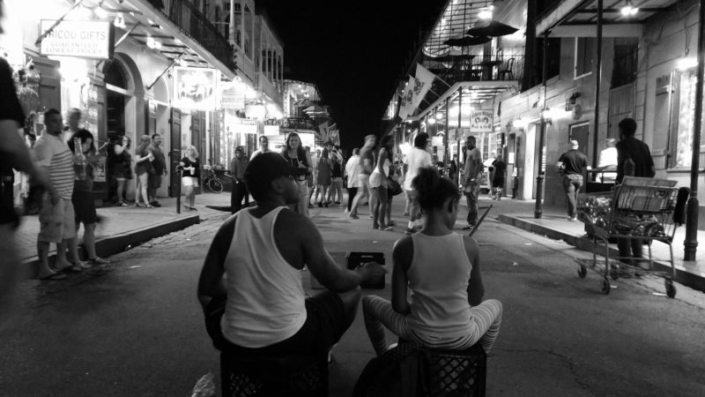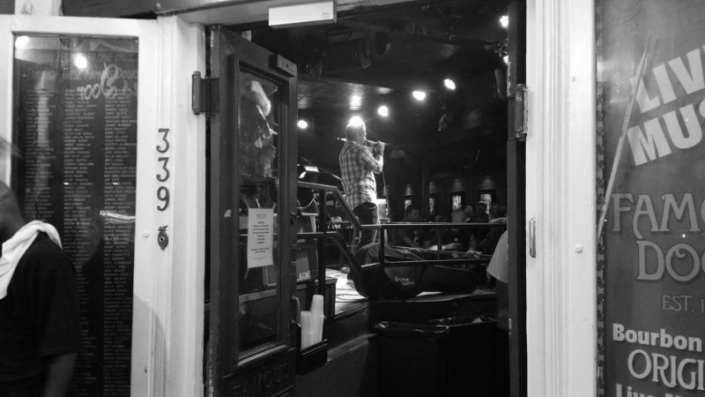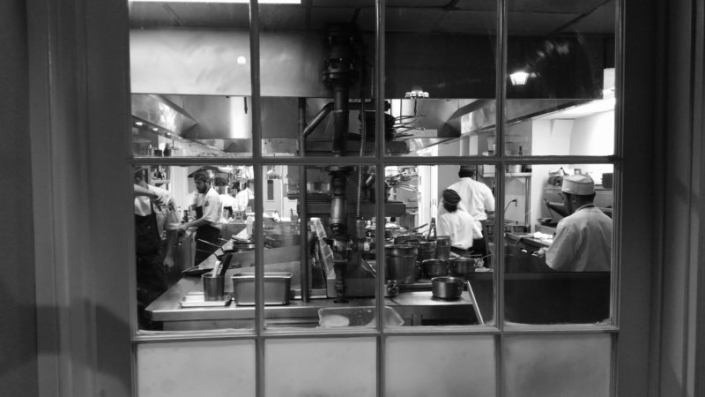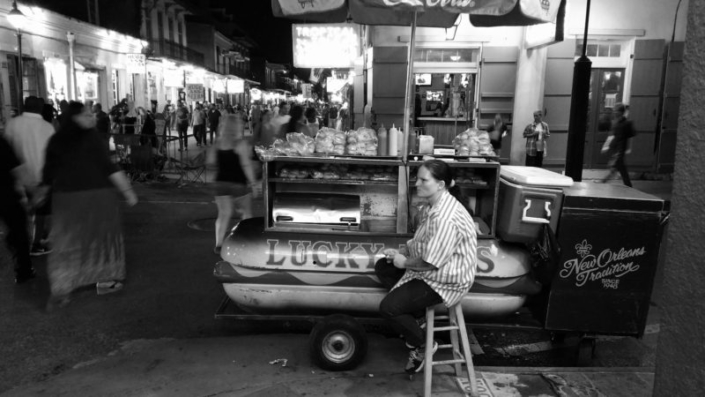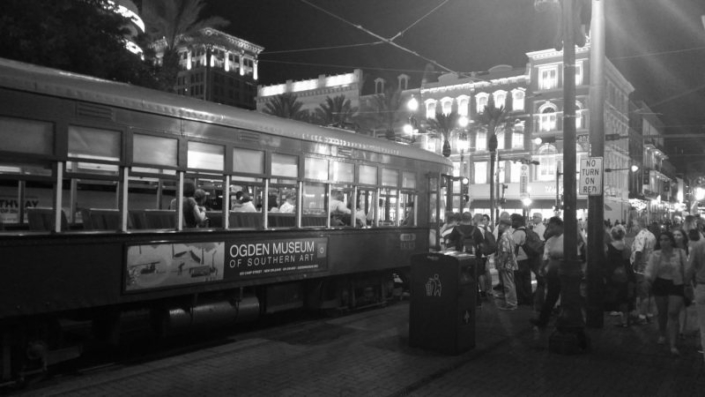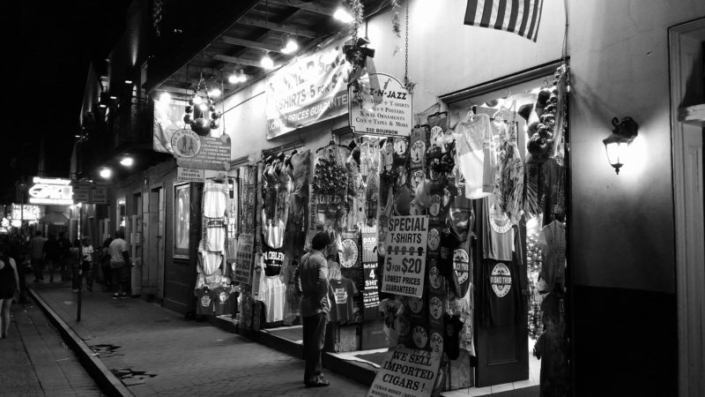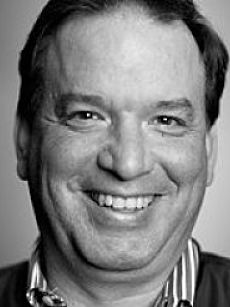Fringe Quarter: Photography
Artist Statement
I love New Orleans. It’s just a four-hour drive from my home in Alabama, and I go there regularly. I can leave at lunch time and be walking into a restaurant in the French Quarter by six p.m.
But visiting New Orleans is a complicated experience, especially over time. Much of what people think about New Orleans is shaped around adjectives like old and warm and southern and hospitable—but the fact is that New Orleans is poor. New Orleans is the poorest big city in America. I can’t think of another area in America that is so visibly and obviously poor that attracts tourists instead of repelling them.
Perhaps visitors see what they want to see, and thus their eyes easily pass over the signs of poverty that abound all around the French Quarter. Perhaps they consider them as part of the scenery; Disney-esque cast members playing a part to set an atmosphere. But unlike Disney, there are no secret backrooms and alleys in the quarter to hide the cast. Also unlike Disney, these cast members are not making a comfortable wage with benefits and vacation days. They are all hustling for what they can get, working along the fringes of one of America’s great tourist destinations, invisible to most, even as they trip over them as they walk through the city.
I always have had a preference for black-and-white photography, and New Orleans, especially at night, lends itself to even more to black and white. But over the years, I’ve increasingly turned my camera from the buildings and streets to the people who have always been just out of frame. My preference is to take simple photos of the moment, in the moment. I rarely even zoom; I want the photo perspective as close to the naked eye as possible. As I’ve collected these shots and grouped them together, a story of the moments that you don’t see as a tourist emerge, a story that feels almost like exhaustion from having to keep smiling for a never-ending sea of strangers.

